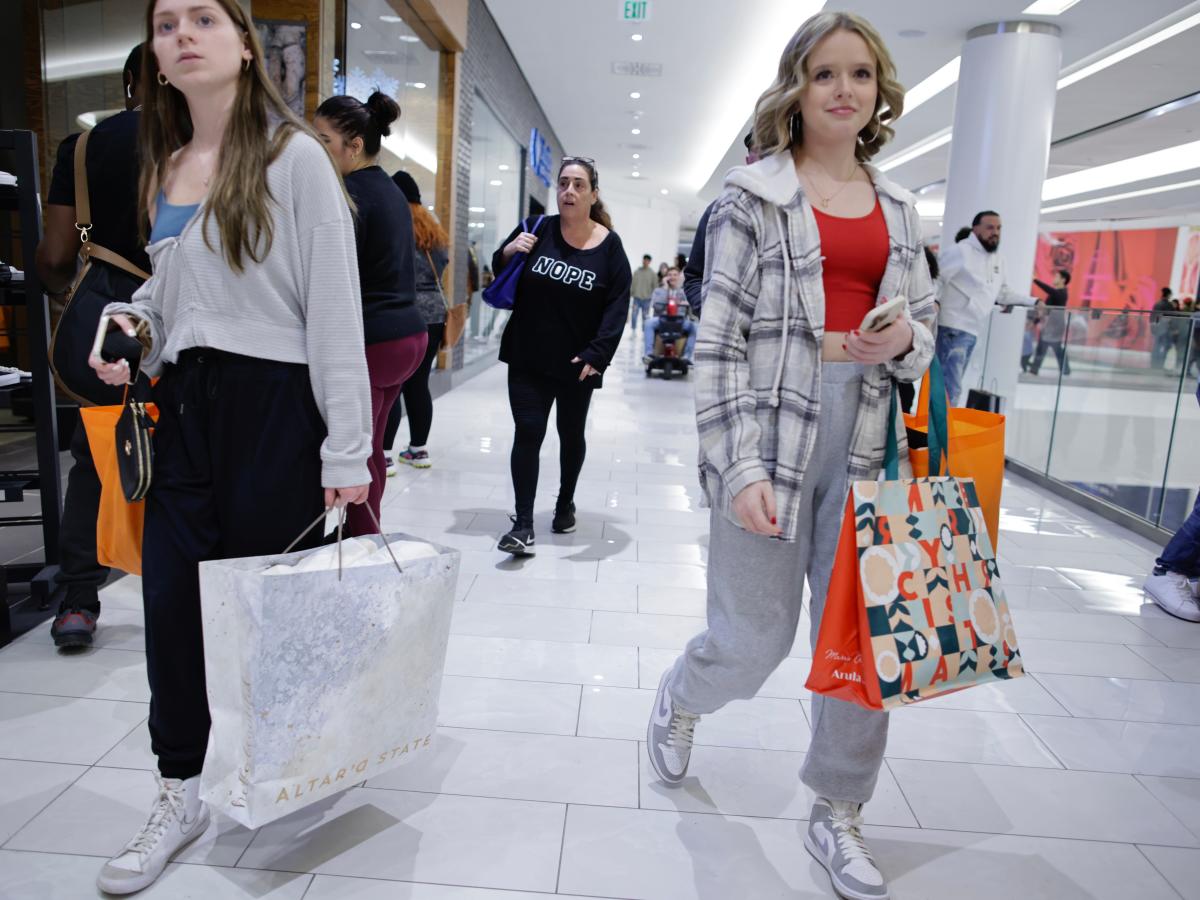“Generations Y, Z, and Alpha to be the Dominant Luxury Goods Buyers by 2030: New Study”
Shoppers walk through a mall.Kena Betancur/Getty Images
-
Gen Y and Z were responsible for all luxury market growth in 2022, according to a report by Bain & Company.
-
Younger generations are projected to become the biggest buyers of luxury goods by 2030, the report says.
-
Gen Z and Gen Alpha spending is projected to grow three times faster than other generations by 2030.
Generation Y, Z and Alpha consumers are not afraid to indulge in luxury – and their luxury bills are only expected to get bigger.
The consumer base of the luxury market will reach 500 million by 2030, according to a Bain & Company report published on Jan. 17. Bain’s study is based on information and data from Fondazione Altagamma, an Italian luxury goods association with over 280 luxury company members.
According to the report, the lion’s share of these luxury purchases will be made by the youngest consumers worldwide: Generations Y, Z and Alpha will be the biggest luxury shoppers by 2030, accounting for at least 80% of global purchases.
Millennials born between 1980 and 1994 are referred to as Generation Y, while Generation Z refers to those born between 1995 and 2009. Those born after 2010 belong to Generation Alpha.
Not only will they be the largest spending group, but Gen Z and Gen Alpha spending is projected to grow three times faster than other generations by 2030 and take up a third of the luxury market. This reflects the “generation’s precocious attitude towards luxury,” according to the Bain report.
These trend shifts are already noticeable. Insider’s Nidhi Pandurangi reported in December that large numbers of young Americans between the ages of 18 and 29 are choosing to live with their parents — at levels not seen since the Great Depression era — likely reducing disposable income for Unleash luxury spending. Insider’s Dan Latu and Kelsey Neubauer looked at the consumer habits of youth and spoke to 20-year-olds who live at home and indulge in cars, designer handbags and nightclubs.
These habits could also be due to the booming luxury resale market, where Generations Y, Z and Alpha treat luxury goods as valuable investments.
For example, a Chanel Medium Classic Flap Bag sold for an average of $3,900 in 2011 based on data compiled by Nasdaq. A decade later, the value had risen to an average of $7,800. A bag bought in 2011 could have had a 200% return on investment in 2021.
Drawing parallels with the S&P 500 index, a dollar invested in 2011 could return around 149% in 2021, showing that certain luxury goods are not just a fashion investment to indulge in, but have the potential to be profitable financial investments.
Apparel led the growth in personal luxury goods sales in 2022
Personal luxury goods have performed well over the past year, with apparel leading growth within the sector, according to the Bain report.
Generations Y, Z and Alpha are spending more on luxury clothing due to the post-streetwear phenomenon. Some elements of post-streetwear are gender fluidity, inclusivity, and disregard for the occasion. Rather than focusing on what’s trending, younger consumers are more interested in the techniques, materials and functions of clothing, according to the Bain report.
Bain is noting record growth in luxury footwear, with Generations Y, Z and Alpha not splurging on the iconic Nike Air Jordan 1 sneakers, but instead buying Birkenstock-inspired shoes — formerly known as “Fussbett sandals.” These sandals usually have a raised platform sole made of lightweight material and straps or buckles to secure your feet.
Bain also said the luxury market will shift from traditional business models to virtual shopping experiences like Web 3.0 and the Metaverse. This is expected to make luxury goods much more accessible and encourage sales to Generation Y, Z and Alpha consumers.
Read the original article on Business Insider
Don’t miss interesting posts on Famousbio
